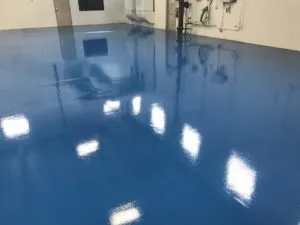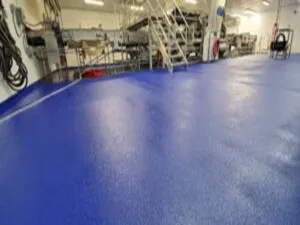Retail Epoxy Flooring
Unfortunately, wear and tear take their toll on any store, and
without finding a way to keep it looking fresh, your business will start
to drop off.
What is the best solution?
If the concrete is in good shape, you could try painting, but that doesn’t hold up under even moderate traffic. Tile, or even vinyl, is expensive and, again, doesn’t hold up to the constant foot traffic. Let’s not forget machinery like low-jacks or tow motors which catch on the tile edges and cause damage.
Stripping and waxing tile floors doesn’t do a lot of good, particularly if there are stains and uneven colors – scratches or gouges – which defy any form of compound or even light sanding. This can become considerably expensive over time. Often times the best solution is to consider a durable epoxy floor coating system.
Epoxy Floor Coating to the Rescue
Because it goes directly over the base concrete and bonds to it permanently, epoxy/resinous coatings often make the most sense. While there is a cost to its application, the benefits – including lifespan – often outweigh short-term cost.
Epoxy coating is probably the least intrusive and most durable way to handle the problem. It normally takes three days for an entire installation which includes, preparation (diamond grinding), patch work and 3 epoxy/resinous coats. By providing the correct diamond grinding equipment, we’re able to adequately condition a substrate for strong adhesion which is one of the most important steps to ANY coating process.
Other advantages are equally impressive:
- The surface is very tough and highly resistant to scratches and abrasions
- Because it is impermeable, epoxy offers a solid covering, with no seams or bumps or unevenness
- It doesn’t hold odors, water or other spills just wipe up
- Rolling carts or other wheeled equipment over it is easy
- Staining is often not a problem – any most spilled liquids or smudges are easy to remove
- Cleaning is much easier to accomplish– no buffing or polishing, just cleaning, brushing, and rinsing, in most cases.
Plus, it is very attractive – there are many colors and designs that can be tailored to fit. Colors and texture can be created with various types of broadcast materials that include, quartz, chips, metallics, etc..











